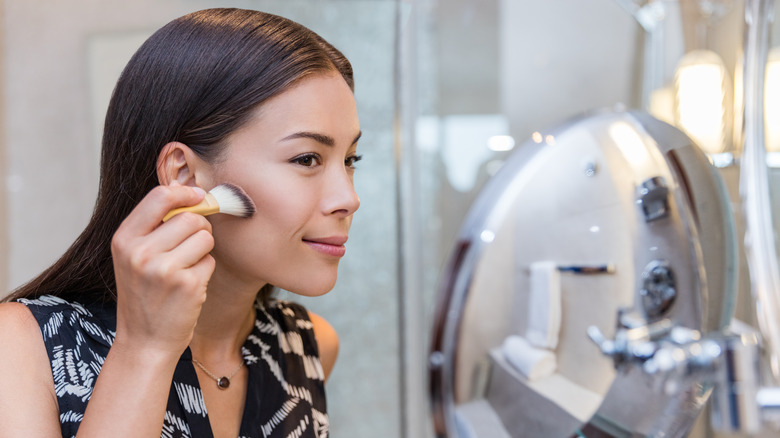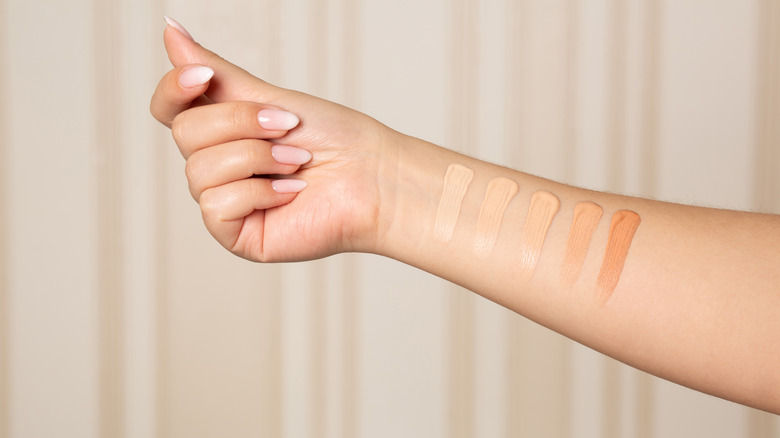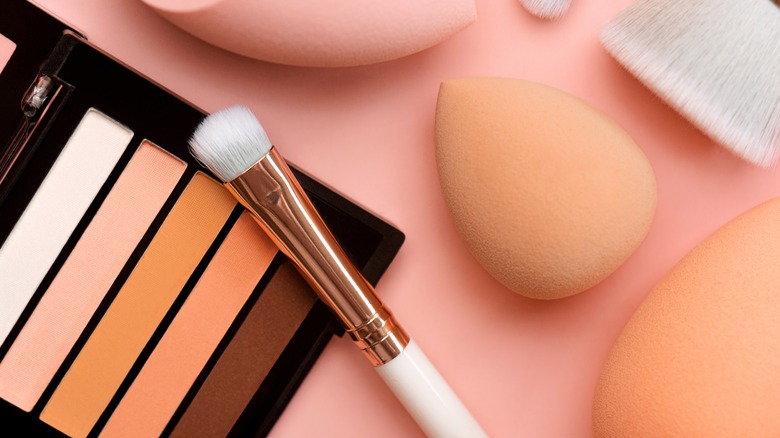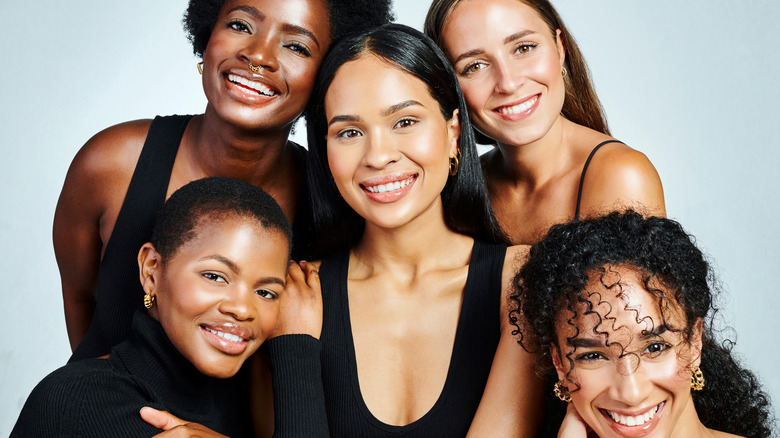How To Use Color Theory To Tailor Your Makeup To Your Skin Tone
When it comes to makeup, finding the right shade that perfectly blends into your skin tone can be difficult. In fact, approximately 6 in 10 people who regularly use foundation and concealer say they struggle to find the right tone. You may find that a foundation concentrate changes the game for your summer makeup or guides you through the technique of color correcting, but that might not mean you've found the perfect shade. If that sounds familiar, allow us to introduce you to color theory: a way to understand your skin tone and what colors match best.
Color theory is based on the idea that our skin tone has more basic shades within us. According to celebrity makeup artist Robert Sesnek, "Your skin tone may change throughout the year, but your undertone never changes," he explained to Byrdie. For example, brown skin is best suited for warm shades, like golden, yellow, or peach. On the other hand, light skin tones are best suited for cooler shades like pink, blue, or red. But that's just the beginning — there are a number of ways to identify your skin tone, its undertones, and how to find products that flatter these shades the best.
Identifying your undertone
The first step to shade matching is identifying your undertone(s). As explained by makeup artist Daniel Martin, finding the right undertone can make a huge difference in the appearance of makeup, and there are a few ways to start. "It helps to identify your undertone in order to harmonize and balance skin tone with the appropriate foundation and concealers," he explained to Byrdie. "When trying to find the right shades, I like to match from the center of the face down to the middle of the neck, as this will give you the most accurate representation and allow you to see any redness you may want to cancel out." This is often the best technique for shade matching and properly identifying your undertone, which is essential for avoiding a line of demarcation (or that pesky, unblended area that shows a difference in color).
When it comes to undertones, there are 3 main categories: warm, cool, and neutral. As noted above, warm colors include shades like golden, yellow, or peach, which best suit medium-to-dark-toned olive skin. Cool undertones are typically best for light-toned skin, with shades like blue, pink, and red that best compliment your skin (think Taylor Swift's iconic red lip look). Believe it or not, these shades can also meet in the middle for neutral tones that best suit slightly melanated skin, leaving room for experimentation and a blend of multiple shades.
Experimenting with accessories before makeup
If you're lost on which undertone suits you best, try using clothing and accessories to help find the right color. For those of us who lean towards darker tops and pants, warm colors may suit you best, especially if darker colors flatter you more than lighter colors. In the same sense, those of us who choose gold jewelry over silvers and rose golds are likely warm toned, while silvers suit cool toned skin and rose golds suit neutral tones. As Sesnek confirmed, "Gold jewelry tends to be most flattering on warmer skin tones while silver is mostly flattering on cool tones."
Other features — like veins, eyes, and hair color — can also help steer you in the right direction. "You have cool undertones if you can see blue veins in your skin. If your veins appear green on the skin (olive), you're warm," Martin explained. "Neutral is a mixture of both warm and cool undertones." Essentially, the deeper the color, the warmer the undertone. Similarly, dark hair and eyes typically point to warmer undertones, while lighter shades suit cool tones best. If your hair and eye color are a mix-and-match (hello, brown hair and green eyes!), then you may be best suited for neutral tones.
Where color theory can fall short — and what to keep in mind
While the basics of color theory can help you find the right makeup, skin tones are diverse, nuanced, and complicated. The idea that our skin is contained only to three color hues can leave many people feeling oversimplified. The history of color theory was developed centuries ago, when diversity in skin tone and pigmentation wasn't taken into consideration. As a result, many tips and tricks related to color theory and makeup can fall short, and that isn't fair to so many people of color who work hard to shade match. Using color theory for guidance can be helpful, but keep in mind that its roots are in Eurocentric, black-and-white ideas of color.
Finding the right shade of makeup isn't always easy, and different products and companies produce different sets of shades. Thankfully, the discourse surrounding diversity and inclusion in makeup continues to grow, with makeup brands taking actionable steps to create wide-range products — Live Tinted, Rare Beauty, Fenty Beauty, Jessica Blac, and so many more are just a few examples of growth in the makeup industry. With the future of makeup in their hands, there's so much hope for how we navigate beauty.



